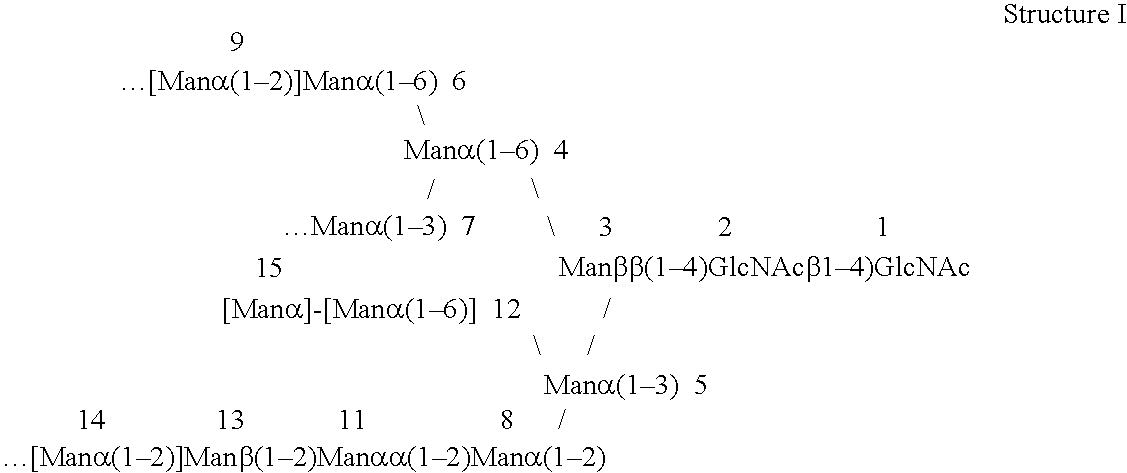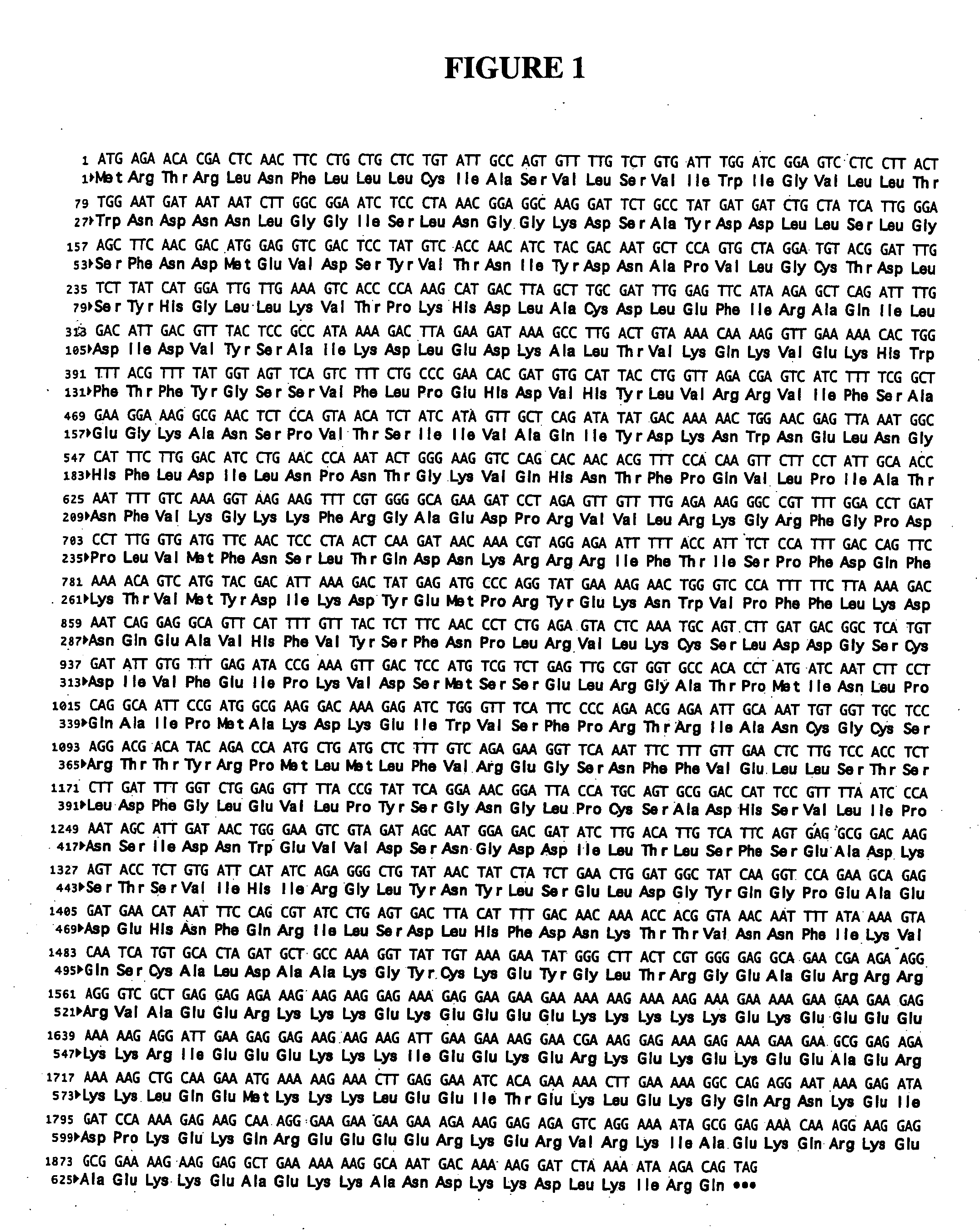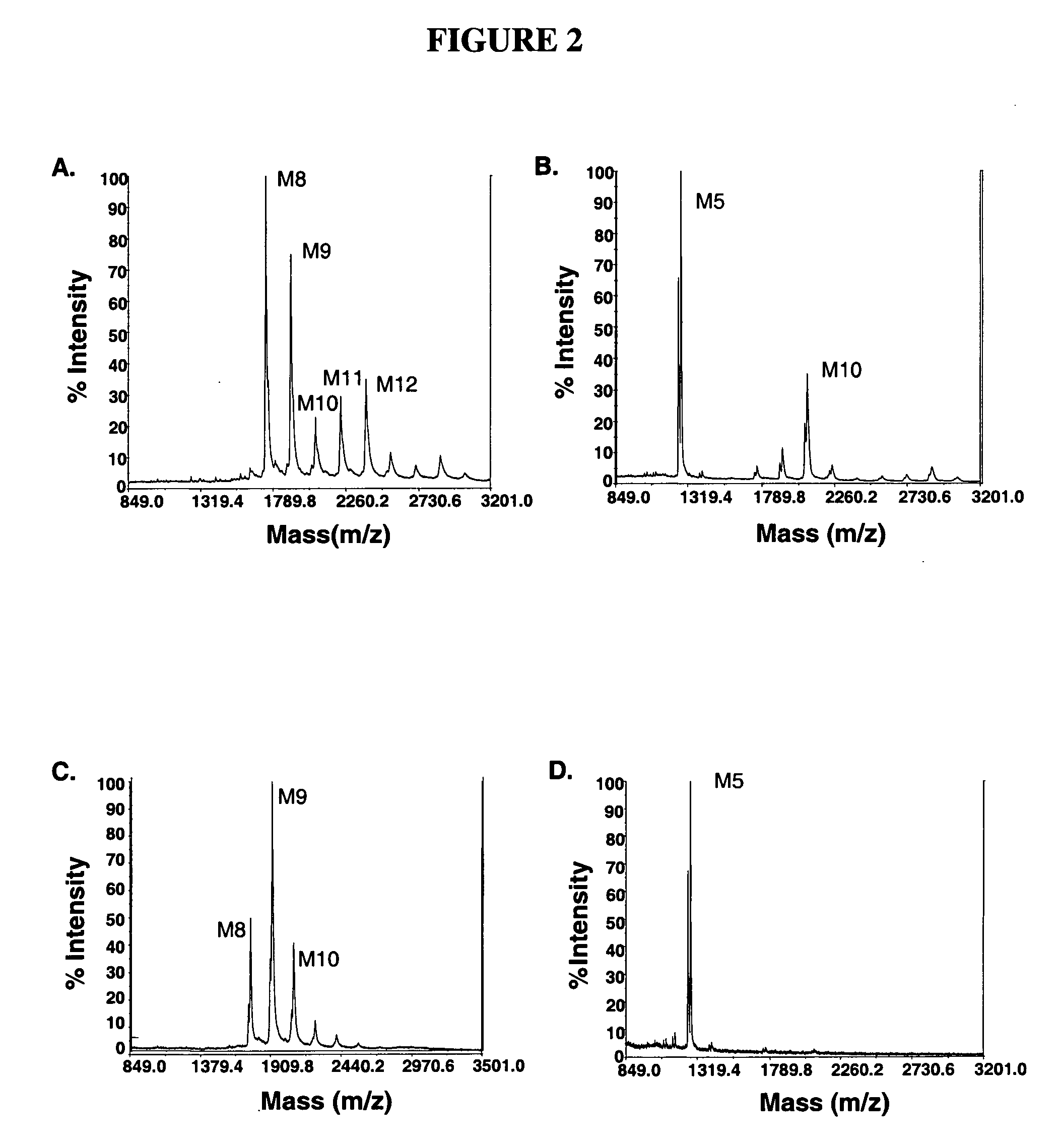Methods for reducing or eliminating alpha-mannosidase resistant glycans for the production of glycoproteins
- Summary
- Abstract
- Description
- Claims
- Application Information
AI Technical Summary
Benefits of technology
Problems solved by technology
Method used
Image
Examples
example 1
Jack Bean and α-1,2 Mannosidase Digestion of N-Glycans
[0087] The standard N-linked oligosaccharides (20 μg) was reconstituted in 100 μl HPLC grade water. A 10 μl aliquot was added to a 0.6 ml siliconized tube. The sample was evaporated to dryness. To the sample, 10 μl of 50 mM ammonium acetate was added, along with Jack Bean mannosidase (0.03 U) or α-1,2 mannosidase from Trichoderma reseei (0.03 mU, a gift from Dr Contreras R, Unit of Fundamental and Applied Molecular Biology, Department of Molecular Biology, Ghent University, Ghent, Belgium). The sample was incubated with the enzyme for 16 to 24 hr at 37° C. The sample was then evaporated to dryness. The sample was reconstituted in 10 μl of water. The sample was subsequently analyzed by MALDI-TOF MS.
Matrix Assisted Laser Desorption Ionization Time of Flight Mass Spectrometry
[0088] Molecular weights of the glycans were determined using a Voyager DE PRO linear MALDI-TOF (Applied Biosciences) mass spectrometer using delayed extra...
example 2
Identification and Sequence Analysis of AMR2 Gene from Pichia pastoris
[0090] The C-terminal part of Saccharomyces cerevisiae MNN4 gene (Genbank accession # P36044) containing a repetitive sequence rich in lysine and glutamic acid was used as a probe to blast against a P. pastoris genomic sequence (Integrated Genomics, Chicago, Ill.). Several DNA fragments with ORF's encoding proteins with similar lysine and glutamic acid rich repeats were identified. Among those one ORF was found to encode for a protein of 644 amino acids with putative N-terminal transmembrane domain and C-terminal tail rich in lysine and glutamic acid structurally resembling S. cerevisiae Mnn4p. Base on the phenotype analysis of the strain carrying mutated allele, the gene was named AMR2 (alpha-mannosidase resistant). Subsequent blast searches of P. pastoris genomic sequence revealed the presence of three more genes closely related to AMR2.
example 3
Deletion of AMR2 Gene in YAS137 Strain
[0091]P. pastoris strain YAS137 (Δoch1, Δpno1, Δmnn4b) (US application Ser. No. 11 / 020,808) was used as a host for the AMR2 gene knockout experiment. YAS137 produces charge free N-glycans without outer chain (FIG. 2A). When digested with α-1,2-mannosidase (FIG. 2B) and Jack Bean (with α-1,2 / α-1,3 / α-1,6 activity) mannosidases, a significant percentage of N-glycans purified from strain YAS137 can be converted to Man5GlcNAc2. However, up to 20% of the total N-glycans are recalcitrant to these α-mannosidases (FIG. 3). The amr2 deletion allele (amr2::KanR) was generated by the PCR overlap method (FIG. 4). Primers PBS1-2-C3 (SEQ ID NO: 9) (5′-TAATAGTGGAGAAA-CTTGCAAAGG-3′) paired with PBS2-KO2 (SEQ ID NO: 10) (5′-GTGCTACCTAAAT-CGTATGTGTCGTTGAAGCTTCCCAATGATAGC-3′), and PBS1-2-KO3 (SEQ ID NO: 11) (5′-CTCCCTATAGTGAGTCGTATTCATATGAT-GGGTGTTTGCTCACTC-3′) paired with PBS1-2-KO4 (SEQ ID NO: 12) (5′-CTTGG-TTCAACGCAGCACTTTG-AC-3′) were used to amplify the 5′ a...
PUM
| Property | Measurement | Unit |
|---|---|---|
| Fraction | aaaaa | aaaaa |
| Fraction | aaaaa | aaaaa |
| Fraction | aaaaa | aaaaa |
Abstract
Description
Claims
Application Information
 Login to View More
Login to View More - Generate Ideas
- Intellectual Property
- Life Sciences
- Materials
- Tech Scout
- Unparalleled Data Quality
- Higher Quality Content
- 60% Fewer Hallucinations
Browse by: Latest US Patents, China's latest patents, Technical Efficacy Thesaurus, Application Domain, Technology Topic, Popular Technical Reports.
© 2025 PatSnap. All rights reserved.Legal|Privacy policy|Modern Slavery Act Transparency Statement|Sitemap|About US| Contact US: help@patsnap.com



